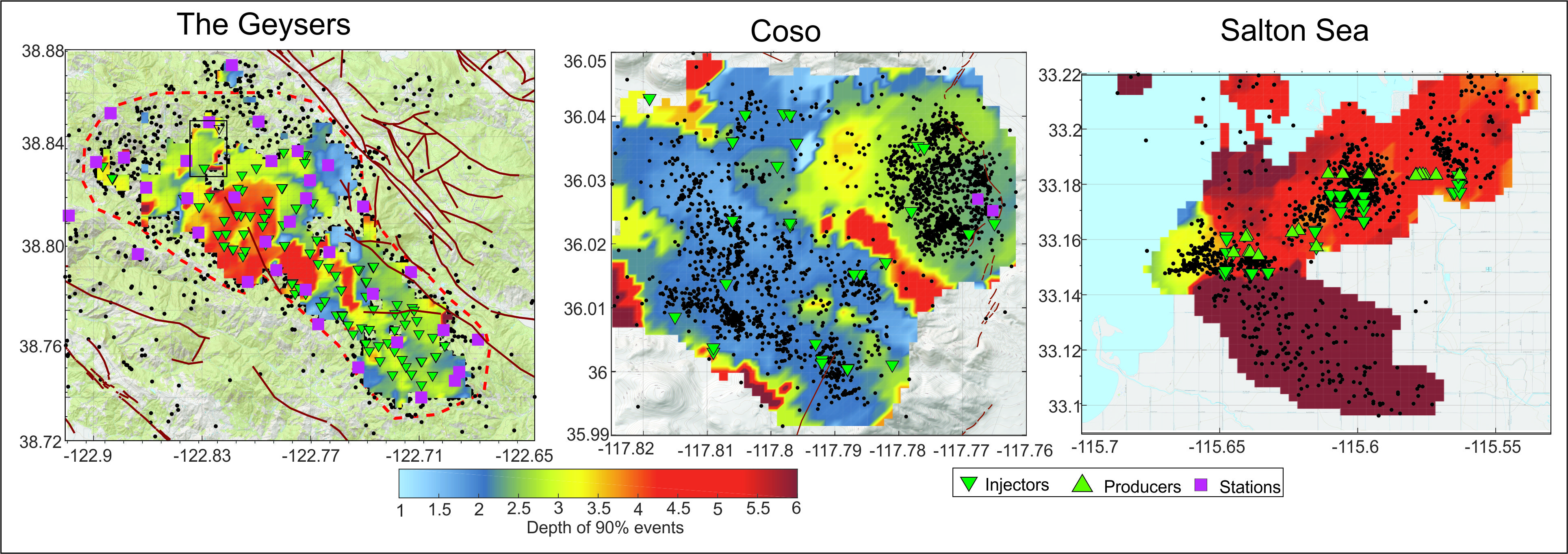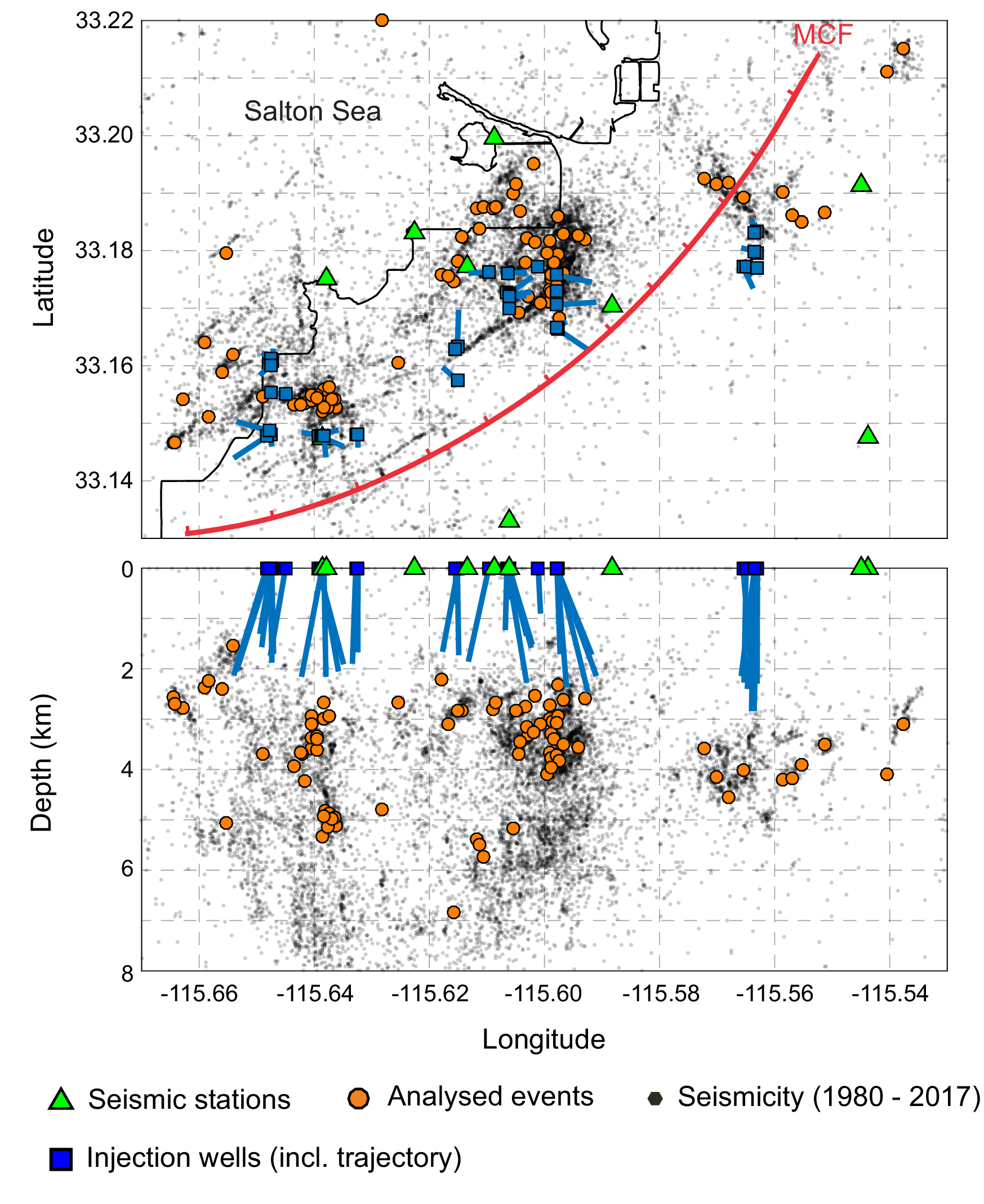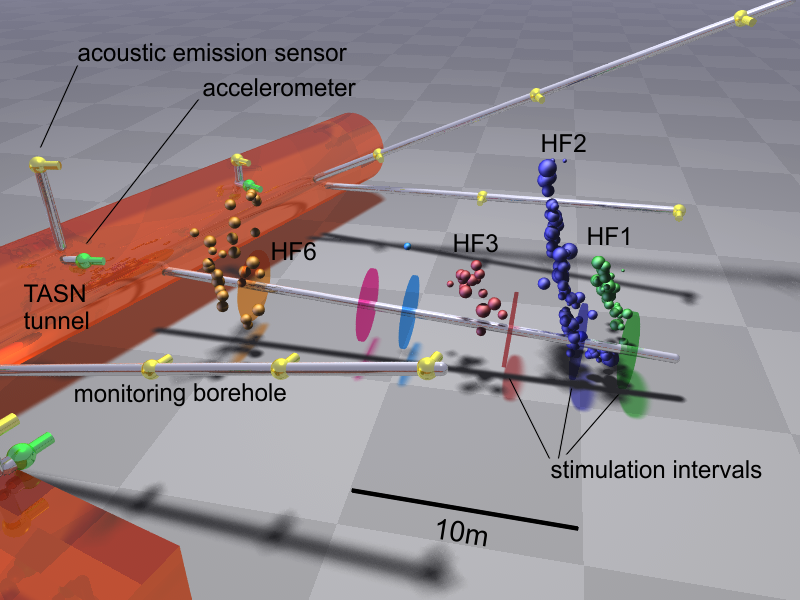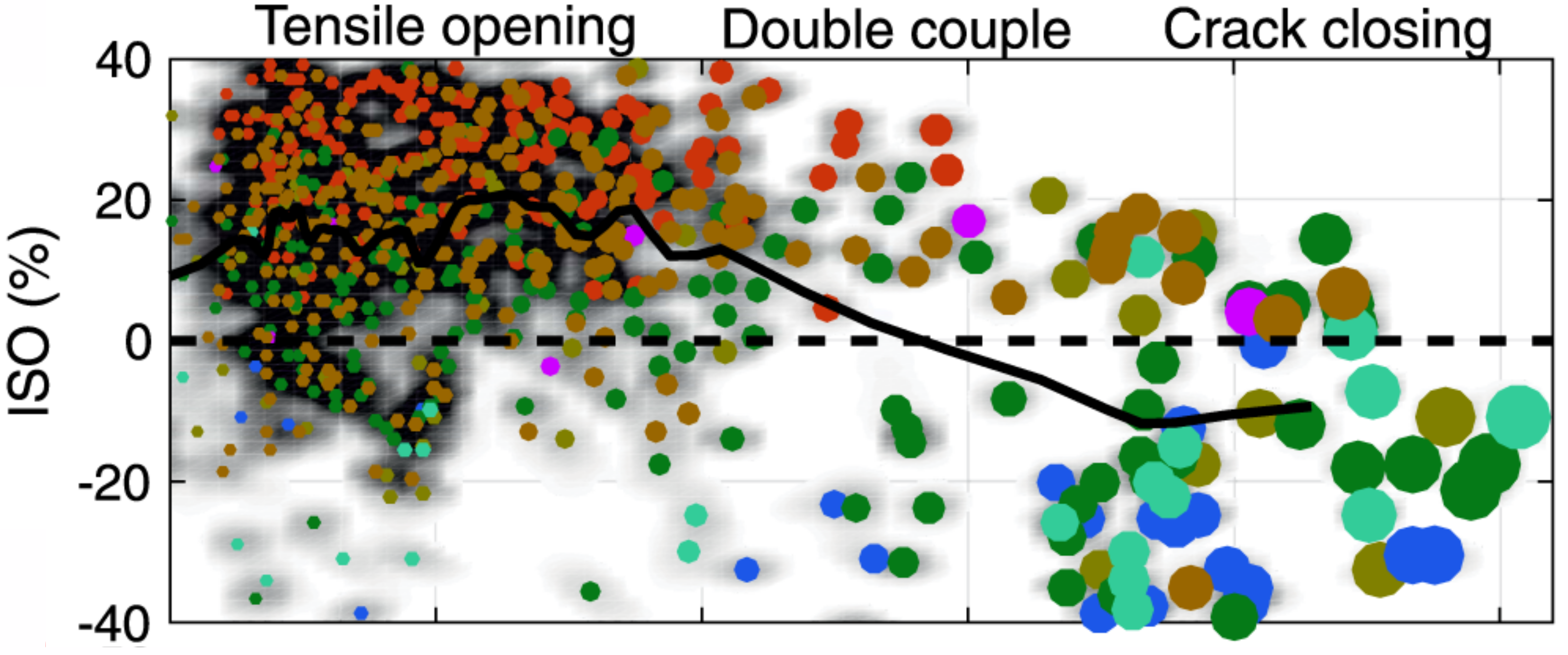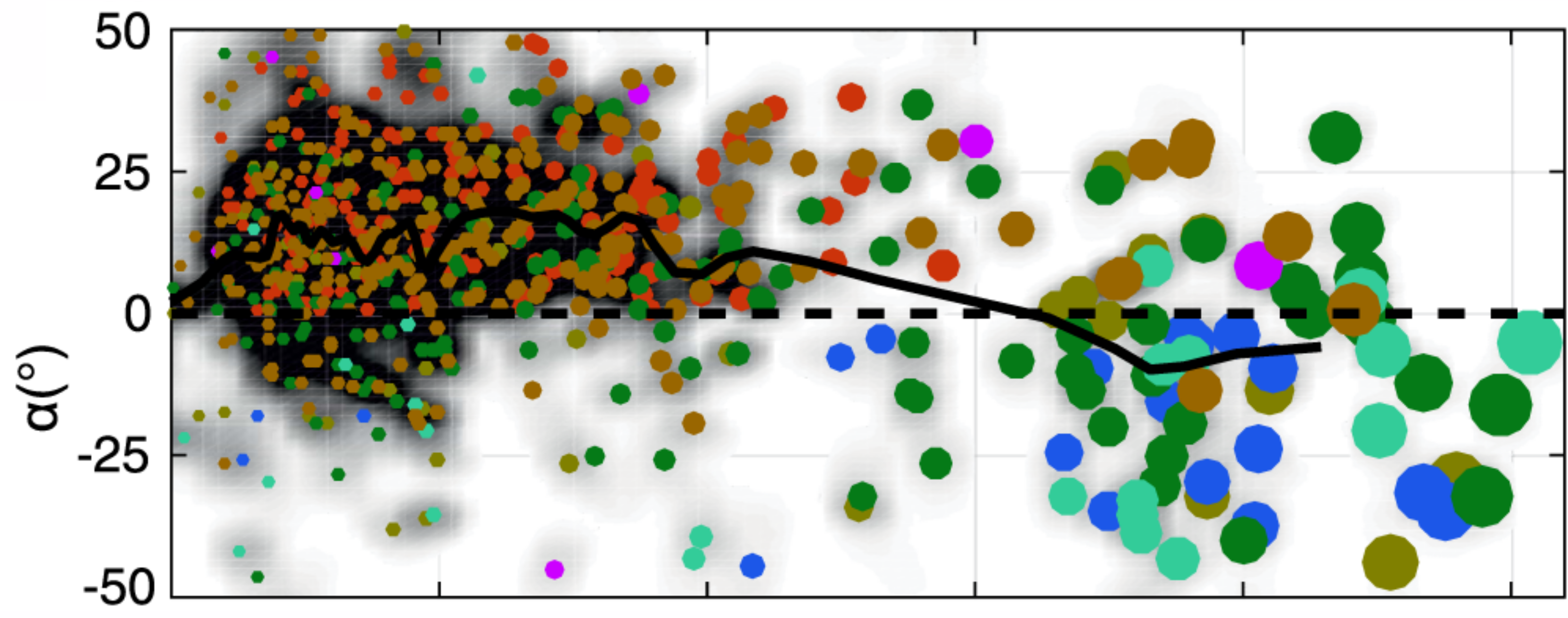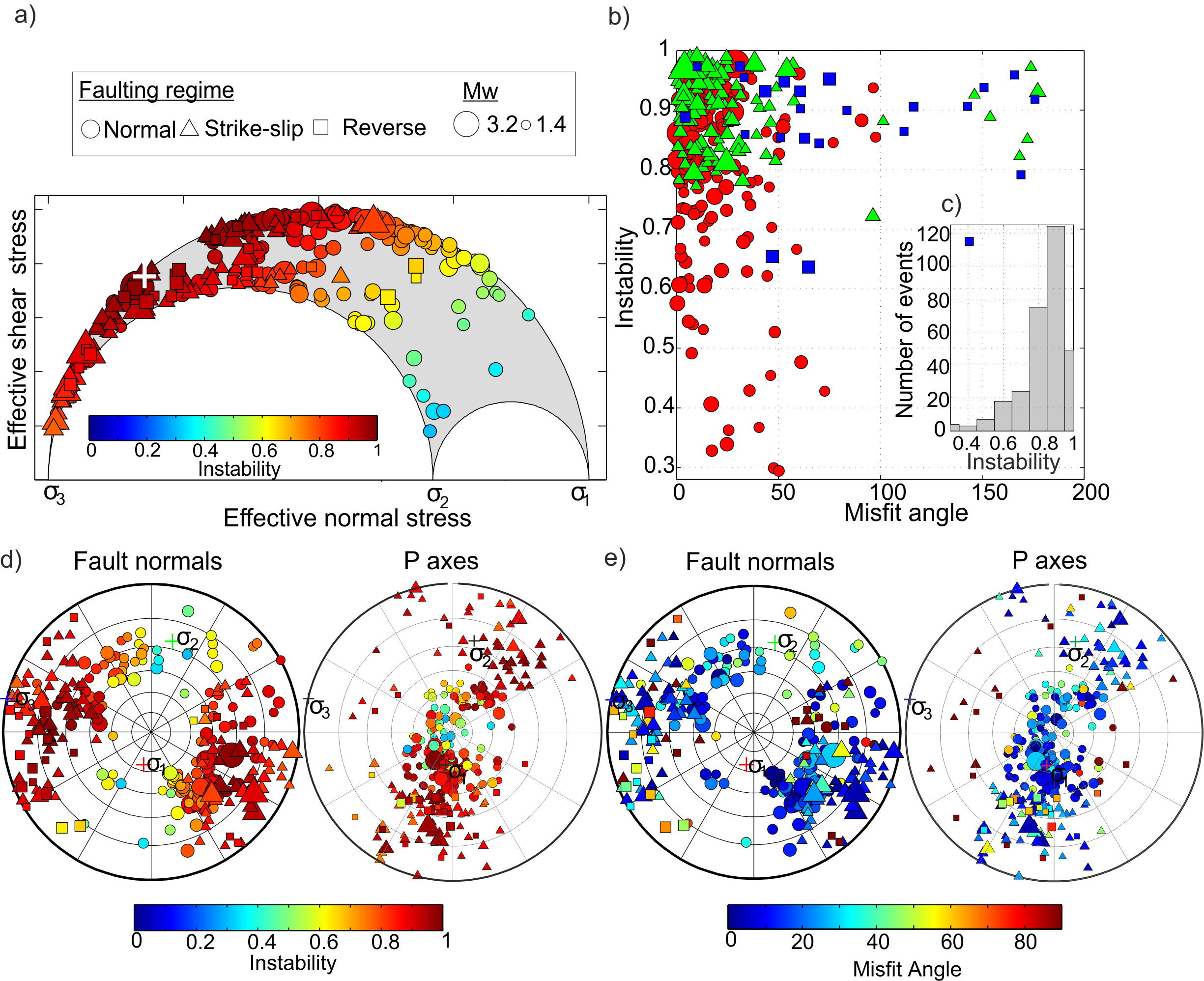Fluid-induced seismicity
Fluid-injection into the subsurface in the frame of reservoir-engineering activities for hydrocarbon and geothermal energy production has resulted in the reactivation of previously unknown critically stressed and thus hazardous faults. In Oklahoma and Kansas (US), a dramatic increase of induced seismicity including four M>5 earthquakes has been seen over the last years. This increased the seismic hazard of the nearby settlements and key-infrastructure, triggering significant public awareness and acceptance issues. SAIDAN aims at investigating the earthquake physics and quantifying the proportion of seismic versus aseismic slip release in fluid-injection environments and investigating the resulting maximum magnitude of the induced earthquakes and the subsequent hazard. To do that, geothermal environments such as The Geysers and Salton Sea are investigated, as well as regions where fluid-induced seismicity is prominent, such as in southern Kansas.
Some of the highlights from our recent studies are the following:
We investigated source mechanisms of 80 earthquakes at the Salton Sea geothermal field in southern California. The performance of two moment tensor inversion techniques (P-wave first-motion amplitudes vs full waveforms) was compared. Only a combination of P-wave amplitude inversion and moment tensor refinement techniques enables a robust determination of the source types. We find that most shallow earthquakes display statistically significant non-double-couple components. Largest volumetric components are inferred for events located near active injection and production wells and primarily correspond to a normal-faulting regime. In contrast, strike-slip events are dominated by shear motion, and their locations extend well beyond the reservoir.
We investigate the source characteristics of picoseismicity recorded during a hydraulic fracturing in-situ experiment performed in Äspö Hard Rock Laboratory, Sweden. The experiment consisted of six stimulations driven by three different water injection schemes. The fracturing process was monitored with a variety of seismic networks including broadband seismometers, geophones, high-frequency accelerometers and acoustic emission sensors. The combined seismic network allowed for detection and detailed analysis of 196 seismic events with moment magnitudes MW<-3.5 (source sizes of dm- scale) that occurred during the stimulations and shortly after. We observe spatio-temporal migration of 34 events (propagation away and towards wellbore injection interval) and temporal transitions in source mechanisms (opening – shearing – collapse) both being controlled by changes in fluid injection pressure. The total radiated seismic energy is extremely low with respect to the product of injected fluid volume and pressure, and it correlates with the hydraulic energy rate.
Analysis of 869 well-constrained full moment tensors of fluid-induced seismicity (Mw 0.8–3.5) from The Geysers geothermal reservoir in northern California were investigated revealed significant non-double-couple components (>25%) for about 65% of the events. Volumetric deformation is governed by cumulative injection rates with larger non-double-couple components observed near the wells and during high injection periods. Source mechanisms are magnitude dependent and vary significantly between faulting regimes. Our results imply that source processes and magnitudes of fluid-induced seismic events are strongly affected by the hydraulic operations, the reservoir stress state, and the faulting regime.
Spatio-temporal trends in statistical, source, and stress characteristics of 1776 induced seismic events from The Geysers geothermal field were analyzed for a period of 7 years. The temporal, spatial, and source characteristics were attributed to changes in the fluid injection rates and the fluid migration toward greater depths, involving increasing pore pressure. The seasonal changes of injection rates were found to directly impact the shape and spatial extent of the seismic cloud. A tendency of larger seismic events to occur closer to injection wells and a correlation between the spatial extent of the seismic cloud and source sizes of the largest events was observed, suggesting geometrical constraints on the maximum magnitude and its correlation to the injection rate and volume of fluid present in the reservoir.
We analyze the fault geometries from seismicity induced by fluid injection at The Geysers geothermal field. The consistency of these faults with the local stress field is investigated using (1) the fault instability coefficient I comparing the orientation of a fault with the optimal orientation for failure in the assumed stress field and (2) the misfit angle β between slip vectors observed from focal mechanisms and predicted from stress tensor. We find that faults activated by fluid injection may display a broad range in orientations. About 72% of the analyzed seismicity occurs on faults with favorable orientation for failure with respect to the stress field.
However, a number of events are observed either to occur on severely misoriented faults or to slip in a different orientation than predicted from stress field. These events mostly occur during periods of high injection rates and are located in proximity to the injection wells. High seismic activity and largest magnitudes occur on favorably oriented faults with large instability coefficients and low slip misfit angles.



